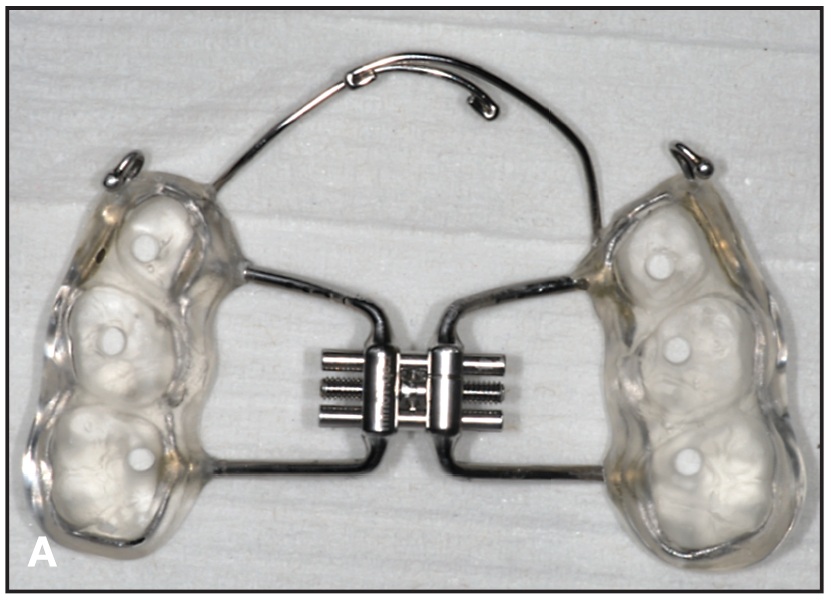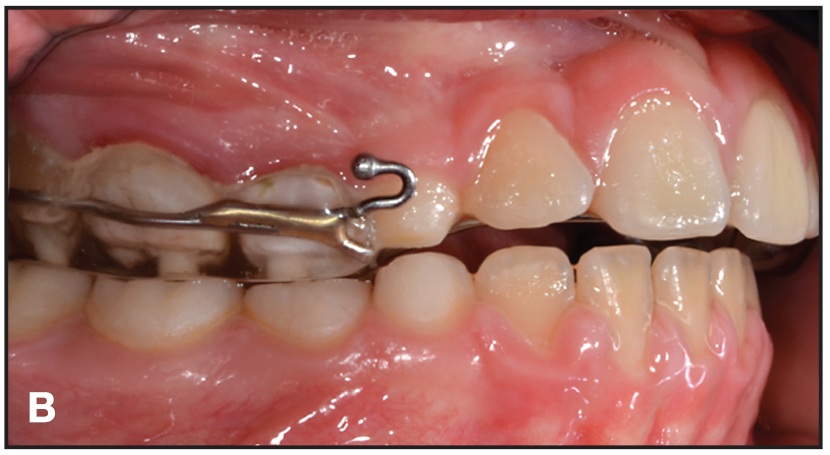PEARLS
A Landmark for Monitoring the Progress of a Bonded Palatal Expander
The bite-block rapid maxillary expander, introduced by McNamara,1 is widely used in orthodontic practice for its ability to control molar extrusion in hyperdivergent patients through muscle-tone activation.
One disadvantage of a bonded expander is that acrylic coverage of the premolars and molars makes it difficult to monitor the progress of arch expansion. We have developed a technique for placing a visible "landmark" in the bite block as follows:
1. During fabrication of the expander, drill the cement-outflow holes for the most posterior teeth at the mesiopalatal cusps (A) rather than the centers of the teeth. When the appliance is placed in the mouth, the cement plugs that form in the outflow holes will be visible through the acrylic as usual (B).
Similar articles from the archive:


2. Monitor the most posterior cement plugs' positions relative to the lower vestibular cusps at each appointment, until adequate overcorrection has been achieved.
This minor modification costs nothing in time or materials. We find that the cement outflow from the cusp area is as efficient as from the center of the resin block.
REFERENCES
- 1. McNamara, J.A. Jr.: An orthopedic approach to the treatment of Class III malocclusion in young patients, J. Clin. Orthod. 21:598-608, 1987.


